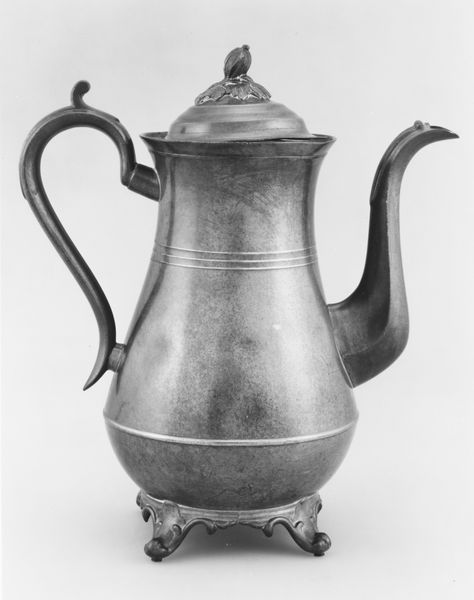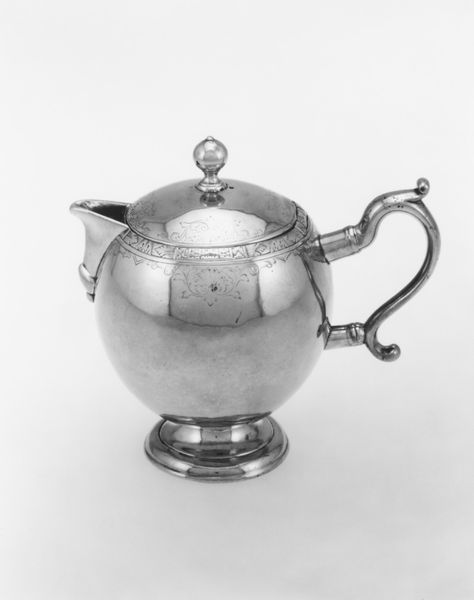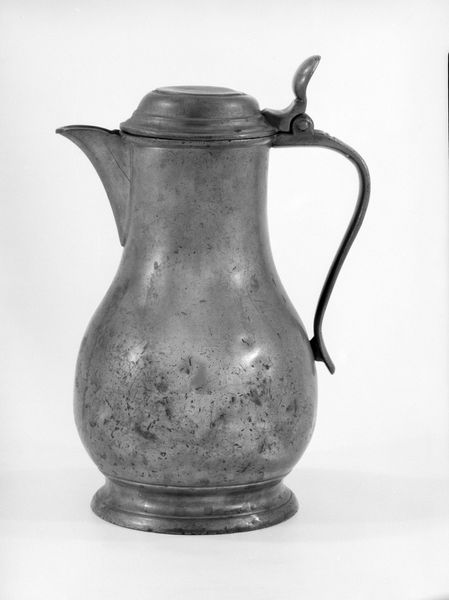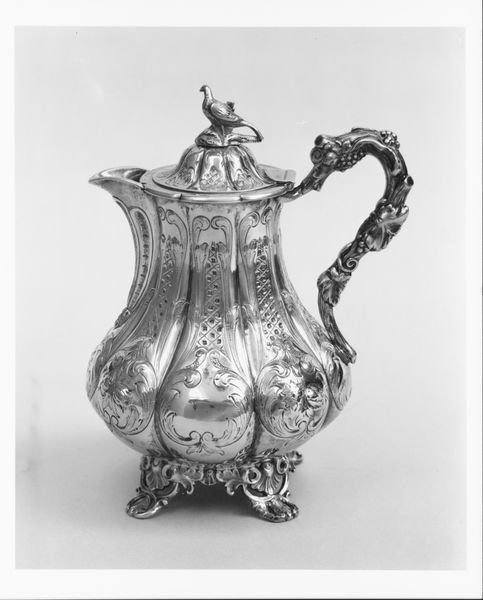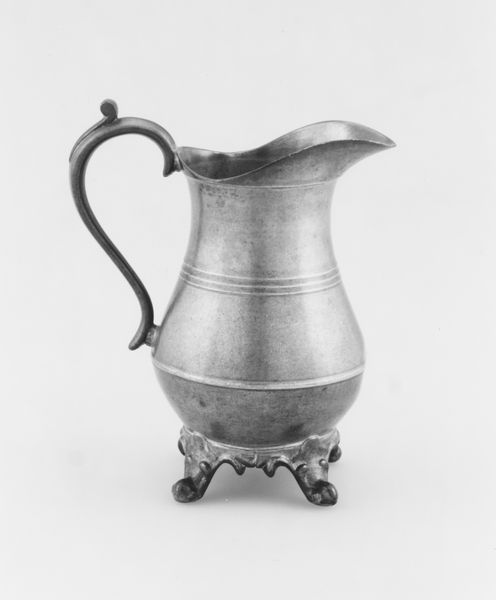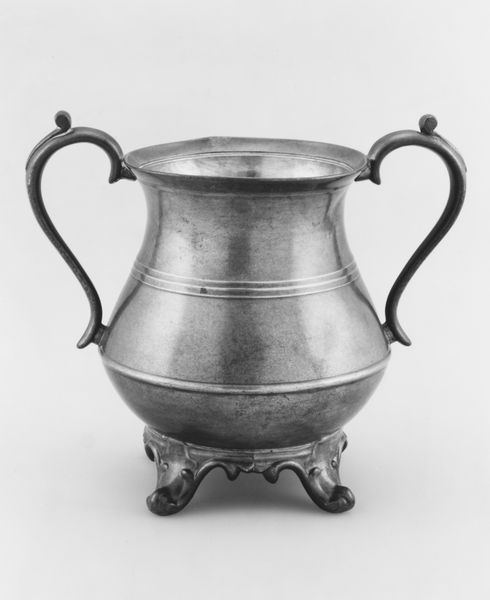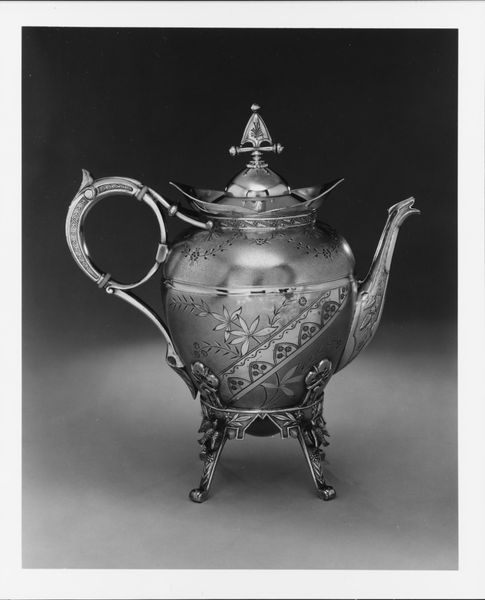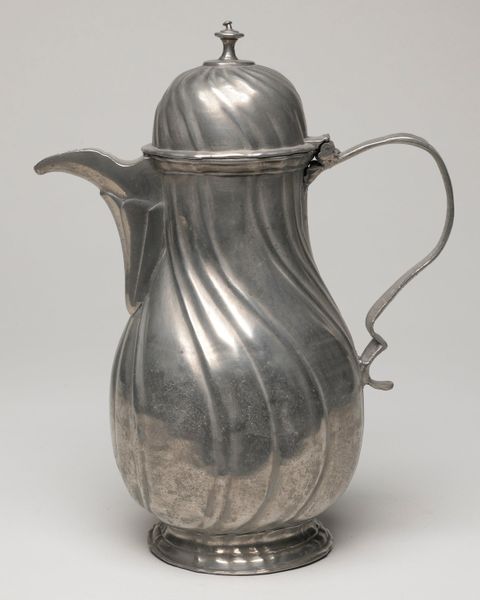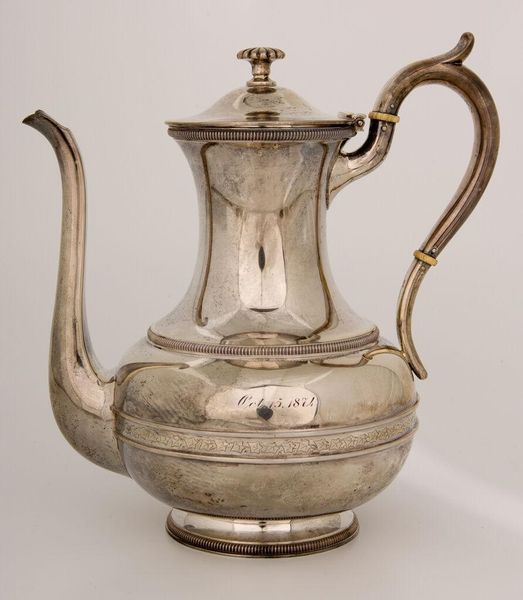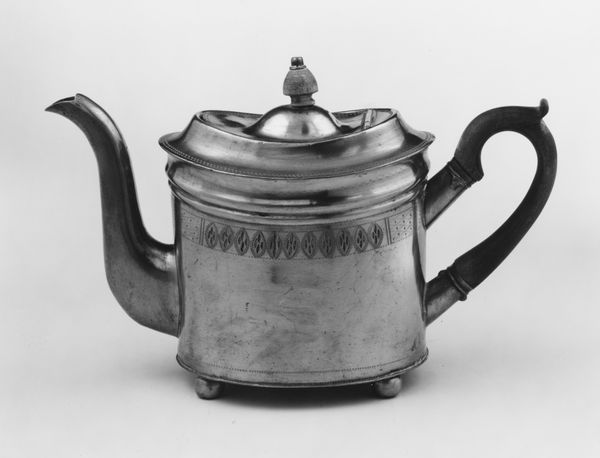
metal, ceramic
#
metal
#
ceramic
#
stoneware
Dimensions: H. 9 1/2 in. (24.1 cm)
Copyright: Public Domain
Editor: Here we have a “Covered Jug” crafted around 1825-1827 by Thomas Danforth Boardman, currently held at the Metropolitan Museum of Art. It’s…functional, certainly. A utilitarian object made of, looks like, pewter. I wonder, what kind of social history is embedded in this piece? Curator: Excellent question. Notice the material, the pewter itself. What does that tell you about its intended consumer? This wasn't a gilded tea service for royalty, was it? Think about the labour involved in mining, smelting, and crafting this object. Editor: So, accessible, but probably not for the poorest households either. Pewter signifies a certain level of…comfort, perhaps? A growing middle class maybe? I am curious about where pewter objects were traded and used at that time. Curator: Precisely. Consider the production methods. Is this hand-wrought or are there signs of early industrial techniques? Does the form echo earlier, more elaborate silver designs? How does mass production impact design choices in compared to older forms and hand crafted ones? Editor: Good point, that uniform finish…almost seamless. It probably required a mold, or some early industrial technique. And it copies older forms; it aims at elegance but is streamlined. Perhaps reflecting evolving tastes and technology? Curator: Yes, this object gives tangible form to an interesting interplay between material access, manufacturing technology and shifting aesthetics within specific class boundaries. We need to investigate the impact of such shifts on both consumption habits and craft traditions. Editor: I see. It's more than just a jug. It reflects production methods and access for certain classes of people. Thanks, now I understand this piece much better. Curator: Exactly! We often overlook these everyday objects, failing to grasp how much they can reveal about production, labor, and evolving economic relationships in early industrial society.
Comments
No comments
Be the first to comment and join the conversation on the ultimate creative platform.
